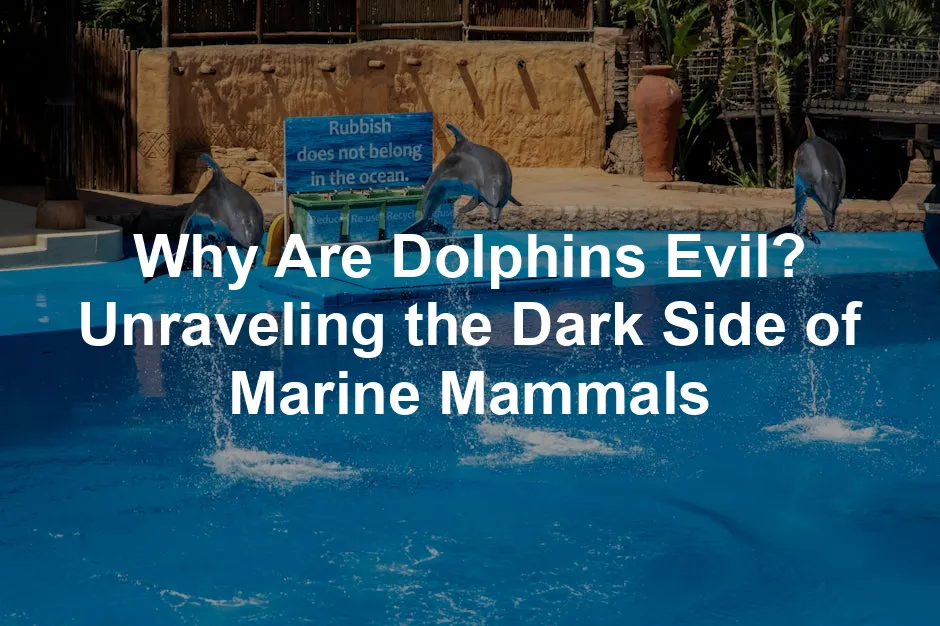
Why Are Dolphins Evil? Unraveling the Dark Side of Marine Mammals
Introduction
In the colorful tapestry of marine life, dolphins often steal the spotlight. These charismatic creatures are painted as the charming heroes of the ocean, frolicking in the waves and forming deep connections with humans. Movies like Flipper and various documentaries showcase their playful antics, leaving many of us enchanted. However, beneath this captivating surface lurks a reality that can be downright shocking. Could it be that dolphins, these so-called “gentle giants,” have a darker side?
Let’s set the record straight. Dolphins are not just friendly faces; they possess an array of unsettling behaviors that challenge their wholesome reputation. They exhibit aggression, engage in violent mating practices, and even commit acts that some might label as murder. Yes, you read that right! As we dive into the murky waters of dolphin behavior, we’ll uncover tales that might make you rethink your affection for these marine mammals.
Why do these intelligent beings engage in such alarming actions? It turns out, their complex social structures and instinctual drives often propel them to behave in ways that starkly contrast their public image. From male dolphins teaming up to attack females to disturbing instances of infanticide, the reality of dolphin life is far from the idyllic scenes we often envision.
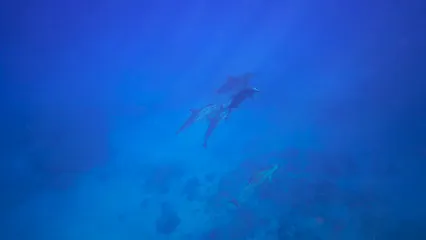
For those who want to dive deeper into understanding dolphins, consider grabbing a copy of Dolphins: The Complete Guide. It’s packed with information that will not only entertain you but may also prepare you for the shocking truths about our aquatic friends.
In this article, we’ll traverse the depths of dolphin behavior, revealing the unsettling truths that lie beneath their playful exterior. Prepare to have your perceptions rocked as we explore the darker aspects of these fascinating creatures. Are they really evil, or is it just nature’s way of ensuring survival? Grab your snorkel gear, and let’s journey into the depths of dolphin dynamics, where charm meets chaos!
Aggression and Sexual Behavior
Dolphins may appear friendly, but their mating practices tell a different story. Male dolphins, particularly bottlenose dolphins, often engage in aggressive sexual behaviors. A shocking phenomenon is the gang rape of females. Groups of males can capture a female, taking turns to mate with her. This behavior can last for weeks, leaving the female physically and emotionally traumatized. They don’t just flirt; they use intimidation tactics, making escape nearly impossible. With a prehensile penis shaped like a hook, separation during mating becomes a challenge for the female. This brutal strategy raises eyebrows and questions about the morals of these seemingly charming creatures.
Despite their intelligence, these behaviors can be distressing. Female dolphins sometimes experience a significant impact from this aggression, leading to stress and injury. Evolutionarily, this strategy may maximize male reproductive success, but at what cost? The darker side of dolphin interactions highlights a complex reality behind their playful facade.
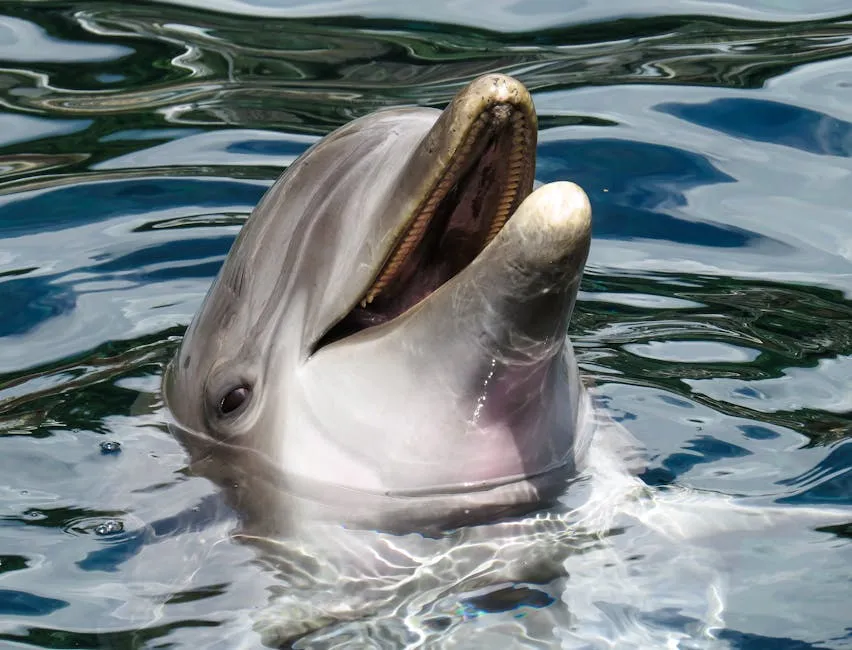
If you’re interested in capturing the beauty of dolphins in their natural habitat, consider investing in an Underwater Camera for Snorkeling. It’s a fantastic tool to document your underwater adventures and witness the playful side of these magnificent creatures—just remember to keep a safe distance!
Infanticide and Cruelty
Infanticide in dolphins isn’t just a rumor; it’s a documented behavior. Male dolphins may kill their own offspring or even the young of other species. The motive? It’s all about reproductive advantage. After a female gives birth, she’s occupied with her calf, limiting her availability to males. By killing the calf, a male can make her receptive to mating again much sooner. This chilling behavior raises ethical questions.
Additionally, male dolphins have been observed attacking baby harbor porpoises, mistaking them for their own young. These acts of violence are not only cruel but also perplexing. The complexity of dolphin social interactions often shrouds these behaviors in a cloud of misunderstanding.
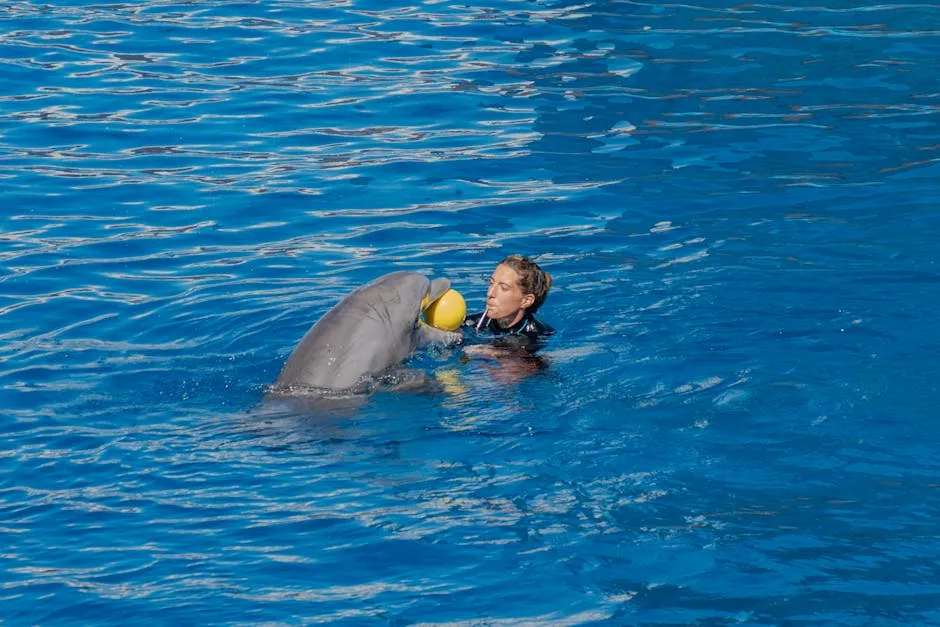
For those wanting to explore the anatomy of dolphins, a Dolphin Anatomy Model can provide insights into their physical structure and help understand their complex behaviors. It’s an educational tool that can spark curiosity and discussions!
Playful Yet Dangerous
Dolphins are often painted as the playful jesters of the ocean, but their antics can be dangerous. Their playful nature can lead to serious situations, sometimes even for humans. In one incident, dolphins were seen tossing baby nurse sharks around like toys. This behavior isn’t just harmless fun; it can cause significant distress and injury to other marine creatures.
Moreover, their intelligence allows them to engage in predatory tactics that showcase their hunting prowess. While they might seem friendly, their playful antics may mask a more sinister side. Their interactions can quickly turn aggressive, reminding us that these creatures are not to be underestimated.
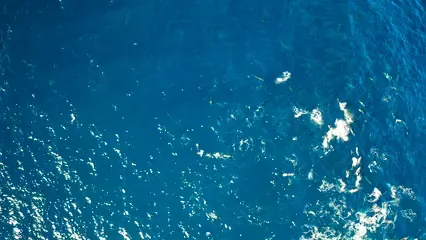
To enhance your beach outings, consider a Beach Towel with Dolphin Print. It’s a perfect accessory for lounging by the waves while showcasing your love for these magnificent creatures!
Ecological Role and Misunderstanding
Dolphins play a vital role in marine ecosystems, acting as apex predators that help maintain the balance of marine life. Yet, human perceptions often misinterpret their behaviors. For instance, what appears as aggression may be a strategy for survival or social dynamics within pods. This misunderstanding leads to misconceptions about their character.
Dolphin behavior is often viewed through a human lens, which can skew our understanding. Their complex social structures involve intricate relationships, alliances, and hierarchies. Recognizing their ecological role is essential for appreciating their behaviors without labeling them as simply “evil.”
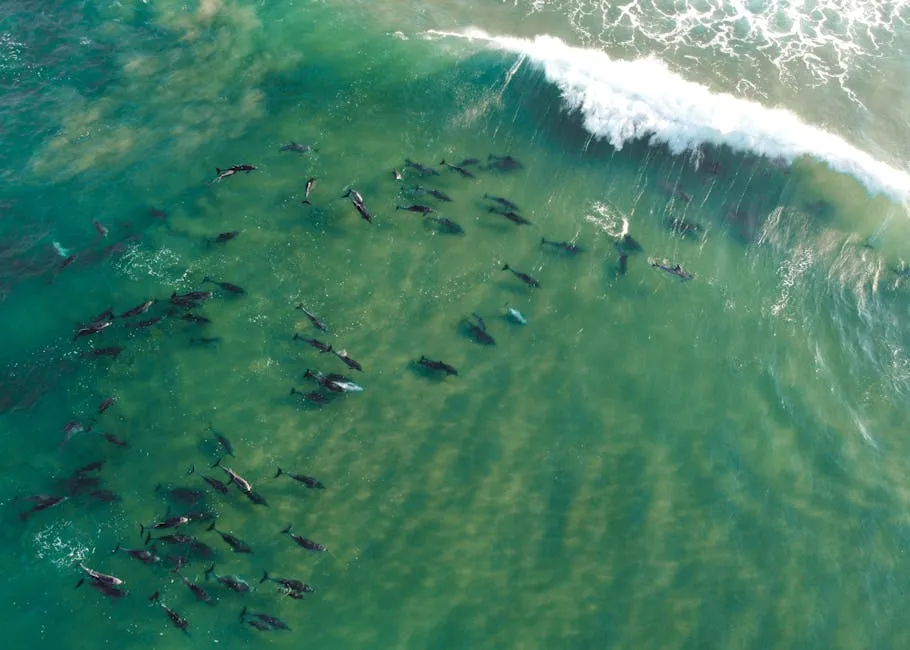
If you’re looking to dive deeper into marine science, consider the book Oceanography: An Invitation to Marine Science. It’s a fantastic resource that can broaden your understanding of marine ecosystems, including the vital role dolphins play!
Debunking Myths
Despite the unsettling behaviors, it’s crucial to understand dolphins within the context of their natural instincts. Labeling them as evil overlooks their intelligence and social complexity. Dolphins have evolved behaviors that may seem aggressive but are often rooted in survival and reproductive strategies.
The portrayal of dolphins in media can amplify misconceptions, leading to sensationalism. Understanding their behaviors in light of their environment and social structures fosters a more nuanced view. Dolphins are not inherently malevolent; rather, they navigate a world shaped by instinct and survival. By appreciating their complexities, we can move beyond simplistic labels and recognize the multifaceted nature of these fascinating marine mammals.
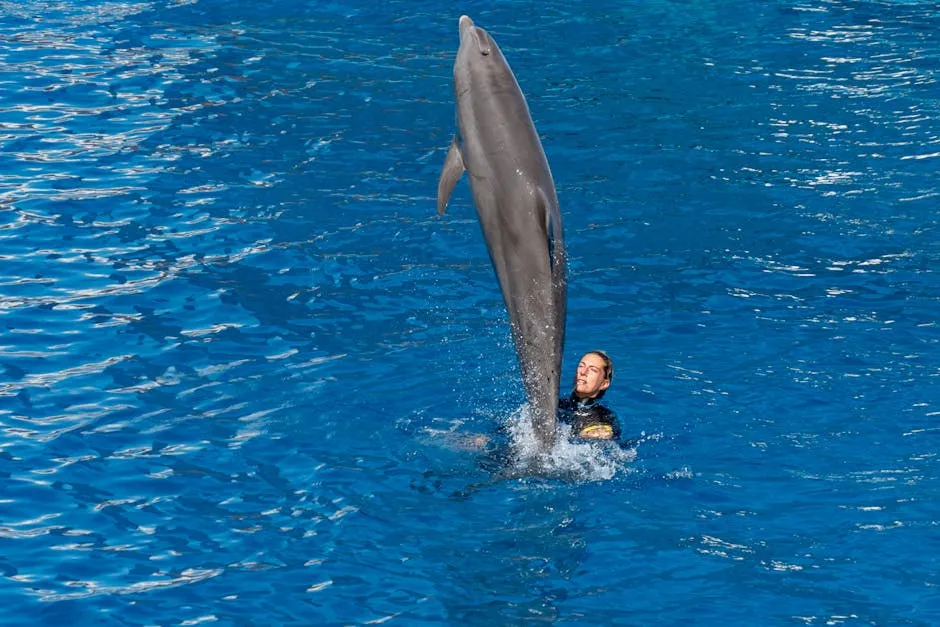
The Complex Social Structure of Dolphins
Dolphin pods are fascinating social groups. They function like intricate communities, with members forming strong bonds. These social connections are vital for their survival. Dolphins rely on each other for both hunting and protection. They often engage in cooperative hunting strategies, taking on larger prey together. This teamwork allows them to be highly effective hunters.
In some pods, hierarchies develop. Dominance is established through complex interactions. Males may form alliances to control access to females. These alliances can influence mating opportunities, showcasing their social intelligence. For instance, a group of males may work together to fend off rivals, ensuring they maintain their status within the pod.
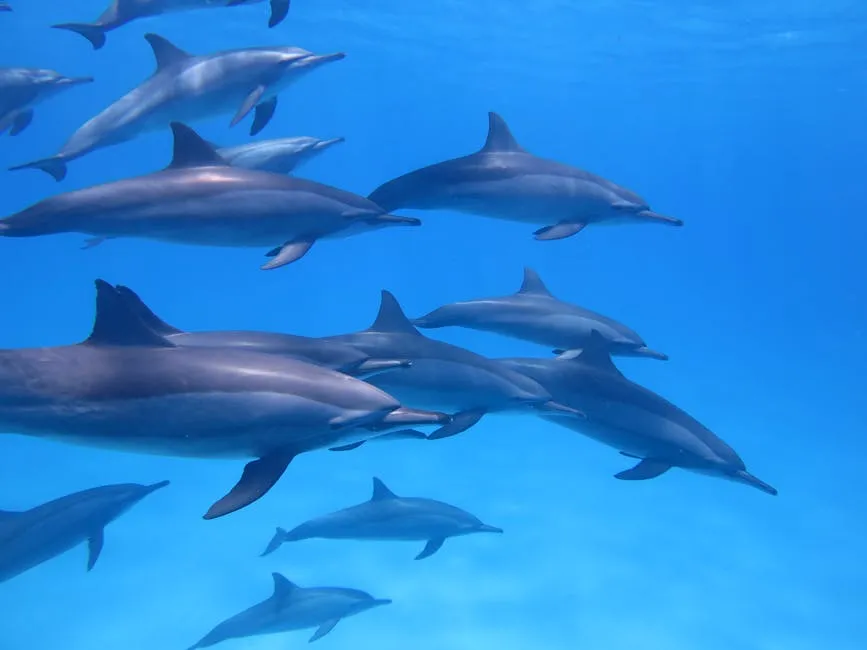
Interestingly, dolphins also exhibit protective behaviors. They are known to guard mothers and calves from potential threats, like sharks. This protective instinct reflects the importance of social bonds. When a dolphin pod works together, they create a supportive environment that fosters safety and reproductive success.
The dynamics within dolphin pods are anything but simple. They illustrate the complexity of social interactions in the animal kingdom. Understanding these structures is key to grasping the broader implications of dolphin behavior, including the darker aspects that challenge their friendly reputation. Are dolphins truly evil, or do they simply act according to their social instincts?
Aggressive Mating Practices
Dolphins are notorious for their aggressive mating strategies, especially among males. Male bottlenose dolphins often engage in disturbing behaviors, including what can be described as gang rapes of females. During mating season, males may form groups to overpower a female, taking turns to mate with her. This can go on for extended periods, sometimes lasting weeks.
These aggressive encounters are marked by physical intimidation. The male dolphins will use vocalizations and displays of strength to keep the female subdued. Their anatomy plays a role; a dolphin’s penis is shaped like a hook, making it difficult for the female to escape during mating. This brutal approach raises questions about the nature of consent in dolphin interactions.
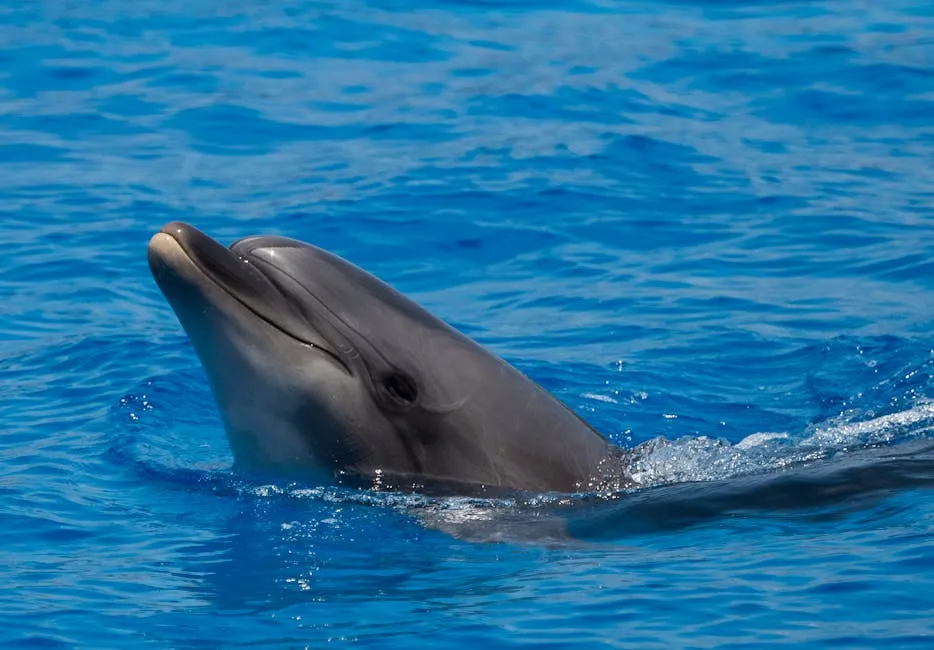
The implications of these behaviors are significant. Evolutionarily, aggressive mating may maximize reproductive success for males, but it comes at a cost. Female dolphins often suffer physical and psychological trauma from these encounters. This aggression can lead to stress-related health issues, impacting their ability to care for calves.
Moreover, these practices have broader implications for dolphin populations. With such aggressive mating behaviors, social structures can become strained. Females may become less willing to mate, leading to reproductive challenges in the pod. Thus, while dolphins are intelligent and social, their mating practices reveal a darker side that complicates their charming reputation.
For a fun way to engage with dolphin themes at home, consider a Dolphin-Themed Board Game. It’s a great way to bond with family and friends while enjoying a bit of dolphin trivia and fun!
The Ethical Debate
Dolphins in Captivity vs. the Wild
Dolphins are often celebrated for their intelligence, but captivity can warp their natural behaviors. In the wild, dolphins swim freely, forming complex social structures and engaging in cooperative hunting. They use echolocation to navigate and communicate, showcasing their cognitive prowess. However, once these creatures are confined to tanks, their behavior drastically changes.
In captivity, dolphins exhibit signs of stress and frustration. Their social interactions become limited, and many develop stereotypical behaviors, like swimming in circles or bobbing their heads. These repetitive actions indicate a profound psychological impact. Imagine being stuck in a tiny room, with no friends to chat with!

Moreover, ethical concerns arise around dolphin shows and interactions with humans. While the idea of swimming with dolphins sounds enticing, the reality is often grim. Trainers may use food rewards to coerce dolphins into performing tricks. This raises questions about consent and the well-being of these intelligent creatures. Are we prioritizing entertainment over their natural instincts?
The stark contrast between dolphins in captivity and the wild highlights the ethical dilemmas surrounding their treatment. The charm of performing dolphins masks the darker reality they face in aquariums and marine parks. As we marvel at their intelligence, we must also consider the consequences of captivity on their mental health and overall well-being.
Media Representation and Misunderstandings
Media plays a significant role in shaping our perceptions of dolphins. From heartwarming films to sensational headlines, the portrayal of these creatures often glosses over their darker behaviors. For example, headlines proclaiming dolphins as “rapists of the sea” grab attention but fail to explore the nuances of their actions.
Documentaries often present dolphins as friendly, playful beings. While they are indeed social creatures, the reality is more complex. Sensationalized media can create misconceptions, leading to misunderstandings about their behavior. When we see dolphins in movies, we forget that these are wild animals driven by instinct.

Moreover, the impact of documentaries can perpetuate myths. The portrayal of dolphins as benevolent creatures can lead to shock when their aggressive behaviors surface. This dissonance fuels the notion of dolphins as inherently evil, which misrepresents their true nature.
As we consume dolphin-themed media, we must remain critical. Understanding the complexities of their behavior requires looking beyond sensationalism. Dolphins, like humans, are multifaceted beings. Acknowledging their intelligence and social structures allows for a more accurate understanding of their actions, challenging the oversimplified “good vs. evil” narrative often presented in popular culture.
FAQs
Are dolphins truly evil?
The idea of dolphins being evil is a hot topic. It’s essential to understand that dolphin behavior is complex and often misinterpreted. While they exhibit aggressive actions, labeling them as “evil” oversimplifies their nature. Dolphins are highly intelligent and social animals. Their behaviors can stem from instinctual drives related to survival and reproduction. Instead of viewing them through a moral lens, it’s better to appreciate their actions in the context of their natural environment.
What are some examples of dolphin aggression?
Dolphins can display some disturbing behaviors that challenge their friendly image. One notorious example is infanticide, where male dolphins kill their offspring or even young of other species. This act may seem cruel, but it often serves a reproductive purpose. Additionally, male dolphins have been observed participating in gang rapes of females. They may form groups to overpower a female, taking turns mating with her for extended periods. Such aggressive behaviors highlight the darker side of these seemingly charming mammals.
Why do dolphins display such aggressive behavior?
Dolphins’ aggressive behaviors can often be traced back to their evolutionary history and social structures. Males engage in competitive mating strategies to ensure their genes are passed on. This instinctual drive can lead them to commit acts that appear brutal. Social hierarchies within pods may also play a role, as males may assert dominance over one another in pursuit of mating opportunities. Understanding these evolutionary aspects is crucial for contextualizing their behavior.
Are dolphin interactions with humans dangerous?
While dolphins are often viewed as friendly, encounters can turn dangerous. There have been reports of dolphins biting or aggressively interacting with humans. Factors contributing to this behavior can include stress from human presence or a lack of resources. It’s essential to approach these animals with respect and caution, especially in the wild. Always be aware of their body language, vocalizations, and overall behavior to minimize risks during interactions.
How do captivity and wild settings differ for dolphins?
Dolphins experience significant behavioral differences between captivity and the wild. In their natural habitat, they form intricate social structures, exhibit complex hunting techniques, and engage in natural behaviors. However, in captivity, their environment is restricted, which can lead to stress and abnormal behaviors. Dolphins in aquariums may develop stereotypical actions, like swimming in circles, due to confinement. This stark contrast raises ethical concerns about how we treat these intelligent creatures.
Should we fear dolphins?
Fearing dolphins may not be necessary, but caution is warranted. While their playful nature often captivates us, their intelligence and strength can lead to unpredictable behavior. Respecting dolphins in their natural environment is crucial. Understand that they are wild animals, and like all wildlife, they deserve a healthy respect. By appreciating their complexities and maintaining a safe distance, we can foster a better understanding of these fascinating creatures without unnecessary fear.
Please let us know what you think about our content by leaving a comment down below!
Thank you for reading till here 🙂
The perception of dolphins as friendly creatures is often challenged by their darker behaviors, which raises questions about their true nature. why are dolphins evil
All images from Pexels




